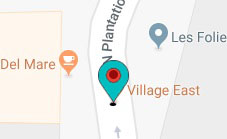Imaging Back Pain

The range and quality of spinal imaging has improved significantly over the years. Nevertheless, there is no test that proves categorically where back pain comes from. Clinical history and examination remains the key to diagnosis when assessing patients with back pain. Scans are used mainly to confirm a diagnosis or to help plan surgery.
MRI (Magnetic Resonance Imaging)
MRI scans have been used since the beginning of the 1980’s. There is no X-ray/radiation exposure. As magnetic fields are used however, patients with metal implants (pace makers, neural stimulators, clips, etc) cannot undergo this investigation.

Patients who have worked in heavy engineering (who may have metal filings lodged within their bodies) may also need to be assessed prior to any scan being performed. MRI Scanners are confined and noisy, so are not recommended for patients with claustrophobia.
MRI scans are also not recommended for pregnant patients. MRI’s are very useful as they illustrate bone, nerve, muscle and most other soft tissues very well.
X-Ray
X-Ray’s are good at assessing the integrity of bones, but they can also be used for assessing other structures. X-Ray’s are a type of radiation/energy that travels as a wave/particle. The doses used in medical imaging are low and are thought to be very safe (similar in strength to other sources of natural radiation that people are exposed to every day). X-Rays however are not recommended for pregnant patients.
CT or CAT (Computerised axial tomography) scan
X-rays and a computer are used to create detailed images. They are good at assessing the integrity of bones (as X-rays are used) but can also be used for assessing other structures including; internal organs and blood vessels.
The CT scanner is ring-shaped and moves, taking a series of X-rays which are used to build up a detailed image. As X-Ray radiation is used (more exposure than a plain X-Ray) it again is not recommended for pregnant women.
CT Myelogram
Myelogram’s are used to study the spinal cord, spine and nerve roots particularly in those patients in whom an MRI scan is contraindicated. A radio-opaque dye is used / injected around the nerves so they can be seen with regular x-rays. A CT scan is performed after the myelogram generating an image of the spine and nerves. See above for information regarding CT scans.










